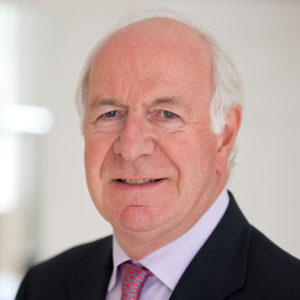medwireNews: For teenage boys with idiopathic short stature (ISS), combining a third-generation aromatase inhibitor (AI) with recombinant human growth hormone (rhGH) therapy can significantly improve adult height, suggest study findings published in the Journal of Clinical Endocrinology & Metabolism.
“Research indicates that the long-term use of AIs, combined with rhGH, can inhibit the synthesis of estrogen, delay the progression of bone age, and promote growth effects, thus helping to augment the [adult height] of children”, explain Ling Hou (Tongji Hospital, Wuhan, China) and co-authors.
To investigate further, the team recruited boys aged 12 years or older with a bone age of at least 13 years and Tanner stage II sexual development plus a testicular volume of 4 mL or greater, and a height less than 2 standard deviations (SD) below the average height for age, or the median parental height.
The patients were treated with rhGH 0.05 mg/kg per day in combination with one of three agents: letrozole 2.50 mg/day (n=91); anastrozole 1.00 mg/day (n=87); or gonadotropin-releasing hormone analogue (GnRHa) 3.75 mg every 4 weeks (n=75).
The participants underwent monitoring for height, height velocity, weight, secondary sexual characteristics and hormone levels every 3 months, and bone age every 6 months, as well as undergoing testicular ultrasound and bone mineral density checks every year.
Propensity score matching was performed to create three treatments groups each with 32 patients, explain Hou et al. The groups were comparable at baseline for chronological age (average 13 years), bone age (14 years), height (151 cm) and difference in the SD score for height by chronological and bone age (–1.3 and between –2.29 and –2.37, respectively).
All the patients received therapy for at least 18 months and follow-up continued until adult height was reached, during which time all participants achieved a significantly greater adult height than predicted at baseline, the team reports.
However, boys given either AI plus rhGH had significantly better outcomes than those given GnRHa plus rhGH in terms of the adult height achieved, the SD score of adult height corrected by target height, the difference in predicted adult height after treatment (PAH), and the difference in the ratio of bone age to chronological age.
Moreover, boys given anastrozole had significantly greater adult height than those given letrozole or GnRHa (173.2 vs 171.8 and 170.4 cm), significantly greater PAH (11.06 vs 9.77 and 8.09 cm), and a significantly higher SD score for final height adjusted for target height (0.81 vs 0.60 and 0.48, respectively).
“Collectively, our results suggest that the anastrazole and rhGH combination group is more effective for the treatment of adolescents with ISS and a bone age ≥ 13 years than when combined with letrozole”, say Hou and co-authors.
After 18 months of treatment, there were comparable growth velocities in the first year in the anastrozole and letrozole groups (10.13 versus 9.24 cm/year), and both AI groups had significantly higher velocity than the GnRHa group. The letrozole and GnRHa groups experienced slower growth velocity in the second year of treatment, whereas the velocity “remained at a relatively high level” in boys treated with anastrozole.
The authors highlight that the boys given GnRHa had “a better overall safety profile than the AIs group”, with significantly greater rates of hyperandrogenemia, hyperuricemia, neuropsychiatric symptoms of drowsiness or memory decline and low levels of high-density lipoprotein cholesterol. But these symptoms were significantly less common with anastrozole than letrozole, including significantly lower average levels of testosterone and serum uric acid.
In addition, oral spironolactone was used to treat hyperandrogenism and within 4 months of discontinuing AI therapy, blood testosterone levels returned to normal, the researchers comment.
None of the participants experienced scoliosis, osteoporosis or fracture, and while the investigators recorded a decrease in lumbar spine Z-score over the course of treatment, they say “these were always within the normal range.”
While recognising that the study is limited by the lack of a control group and randomisation, the team believes that combining rhGH with an AI is “more effective” for increasing adult height in this patient population than combining with GnRHa.
“For children with ISS in the late stage of puberty, the [height velocity] of the GnRHa group remained at a relatively low level, and GnRHa must be combined with rhGH treatment for at least 2 years to induce a significant increase in [adult height]”, they remark.
“Clinicians should consider the child’s individual characteristics and weigh the benefits of various treatments to select the optimal strategy.”
By Lynda Williams
medwireNews is an independent medical news service provided by Springer Health+IME. © 2025 Springer Healthcare Ltd. Springer Health+IME is part of Springer Nature. All rights reserved.


